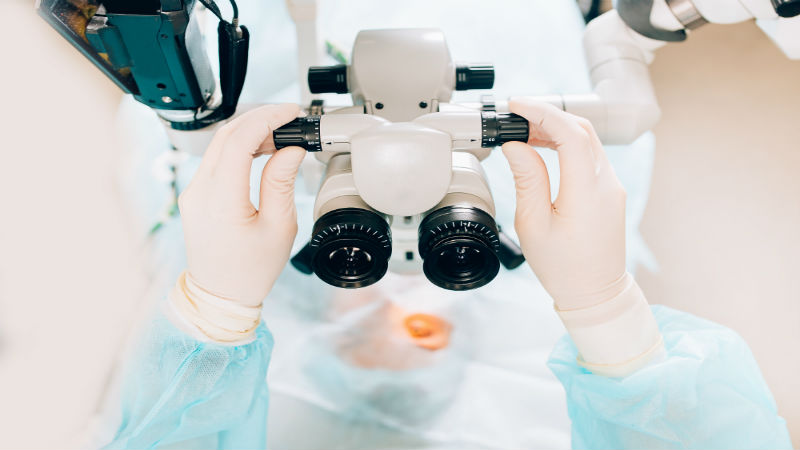LASIK laser vision correction treatment is a very popular solution to presbyopia or vision loss. The name presbyopia comes from the Greek word for “old eye,” and refers to the gradual loss of vision that most adults experience after the age of 40.
Presbyopia is a loss of near sight and affects almost everyone beginning in their 40s even if you’ve had LASIK in the past, or 20/20 vision your entire life.
When you are young, your clear lens is more flexible, allowing it to change shape more freely, which helps the lens focus light onto the retina. After about age 40, this lens becomes rigid and less able to change shape, which makes it harder to focus on close-up tasks like reading. This gradual change in vision is caused by presbyopia.

How is Presbyopia Treated?
Historically, presbyopia has been treated with multifocal eyeglasses, like bifocals and progressive lenses, or simply by wearing eye glasses.
Multifocal eyeglasses are glasses that contain different lenses with different purposes to help you see any distance, far or near. Multifocal eyeglasses are used as a non-invasive treatment to presbyopia because they allow the eyes to see at distances which are usually blurred by presbyopia.
Although non-invasive technology exists to combat presbyopia, monovision LASIK surgery is becoming an increasingly popular solution. With monovision LASIK technology, your eye surgeon can correct the effect that presbyopia has on the eyes. The most common surgical treatment for presbyopia is called monovision LASIK.
What is Monovision Laser Vision Correction?
Monovision LASIK uses laser technology to correct the dominant eye’s ability to see at farther distances, but it does this by making the non-dominant eye intentionally mildly nearsighted. This nearsightedness in the non-dominant eye allows the dominant eye to provide distance vision and take the lead, while the nearsighted non-dominant eye is responsible for sharpening near vision.
Monovision LASIK has the same effect on the eyes as multifocal eyeglasses, yet monovision LASIK permanently adjusts the focal points of the eyes. This permanent adjustment is more difficult for some patients than others. Usually, patients report blurred vision in the dominant eye for up to three weeks after the procedure.
Monovision lessens the effects of presbyopia because it improves the nondominant near sight to the point where glasses aren’t needed to see clearly up close. Monovision involves compromise; the two eyes need to work together to ensure proper functioning.
Your optometrist may prescribe monovision contact lenses before administering a monovision LASIK procedure to enable you to adjust to monovision before the procedure. This helps determine whether you can comfortably adjust to this kind of sight before it becomes permanent with LASIK.
While it may take time to adjust to this new vision, monovision LASIK is a great way to achieve satisfactory vision because during the adjustment period after surgery, the brain actually trains the eyes to portray certain images based off distance. The brain/eye relationship is truly amazing; the brain fills in gaps in our vision and has the power to acclimate us to monovision.

How Do I Know If Monovision LASIK is Right for Me?
Until you begin to develop near vision problems in your 40s, monovision laser technology is unnecessary.
If you are considering Monovision LASIK, visit your eye doctor in Grand Rapids to determine if this treatment will work for you. Patients who have previously worn monovision contact lenses are suitable candidates for this procedure because they can easily adapt to this type of vision correction therapy.
If you want to try LASIK and you have never worn monovision contact lenses, your eye doctor may prescribe them to you for the six to twelve months leading up to your LASIK procedure. This is to ensure that your adjustment to monovision LASIK
Monovision LASIK is a permanent fix for presbyopia in patients over the age of 40. Although the procedure is invasive, it is safe and effective when administered by a reputable and experienced surgeon.

